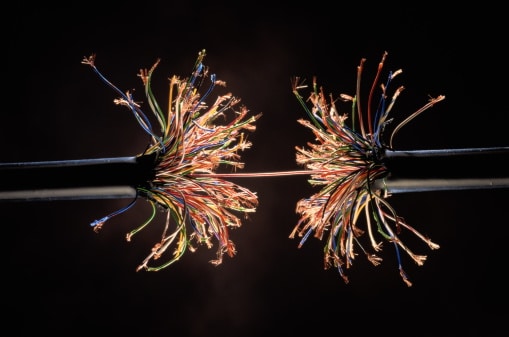The EU Court of Justice’s decision in VG Bild-Kunst v SPK on framing
23.03.2021

On 9 March 2021, the EU Court of Justice (CJEU) issued its preliminary ruling in VG Bild-Kunst v SPK (C‑392/19) which revisits the communication to the public right in the context of linking, specifically embedding (inline linking) within a frame often referred to simply as framing. Framing is a technique in which a webpage includes a frame within which an element from another site is shown. This is typically achieved either by the user being required to activate a hyperlink or through an embedded link that loads the webpage without the need for the user to activate a hyperlink.
Background
The practice of linking has been the subject of much scrutiny from the CJEU over the years. It is worth summarising here some principles from the case law addressing the communication to the public right before considering the decision in VG Bild-Kunst v SPK.
In its seminal decision in Svensson (C466/12), the CJEU determined that posting a hyperlink to freely available copyright-protected works is not an infringement of the communication to the public right in the absence of any communication to a ‘new public’ (i.e., a public not taken into account by the right holder when authorising the initial communication which made the work available). While not necessary for it to do so, the CJEU also observed that where a hyperlink enables a user to circumvent a restriction allowing that user to obtain access to a copyright-protected work (e.g., a paywall), those users would be deemed to be a ‘new public’.
In TVCatchup (C‑607/11), the CJEU concluded that where a communication to the public is made using different technical means to those used for the initial communication, the ‘new public’ requirement may not be necessary. In the context of linking, it is difficult to see how the technical means would be different if the initial communication was made via the Internet.
In GS Media (C‑160/15), the CJEU considered the circumstances where a hyperlink resolved to freely available content but which had been made available without the authorisation of the right holder. Concluding that Svensson must only have been considering hyperlinks to works that had been made freely available with the authorisation of the right holder, it did not exclude the possibility of works made available without authorisation falling within the scope of the communication to the public right, subject to the user having ‘knowledge’ of that status.
One particular question which had not thus far been resolved was the extent to which website terms of use could be relied upon to withhold authorisation and restrict linking to copyright-protected content, be it as a contractual restriction or, in the absence of the website terms forming a binding contract, as a limitation on the scope of any non-contractual licence of any right of communication to the public.
Facts
VG Bild-Kunst (VG) is a copyright collecting society. SPK operates a digital library named Deutsche Digitale Bibliothek (DDB), which it makes available to third parties. The dispute related to a provision in a licence agreement between SPK and VG for the use by SPK of VG’s catalogue of copyright works through the DDB website. VG wished to include a provision in that licence requiring SPK to implement effective technological measures to prevent third parties framing VG’s works, which would be freely available on the DDB website. SPK objected to this provision.
In national proceedings in Germany, the Bundesgerichtshof had to consider whether framing would constitute a communication to the public where it was achieved by circumventing protection measures adopted by the rightholder or imposed upon a licensee by the rightholder, as was the case here. If it did, then VG would be entitled to make its licence subject to the implementation of those protection measures. The Bundesgerichtshof referred the following question to the CJEU: ‘Does the embedding of a work – which is available on a freely accessible website with the consent of the right holder – in the website of a third party by way of framing constitute communication to the public of that work within the meaning of Article 3(1) of Directive 2001/29 where it circumvents protection measures against framing adopted or imposed by the right holder?’
Decision
The CJEU had little difficulty in concluding that the technique of framing was capable of constituting a separate act of communication to the public. In this case, however, the technical means used for this communication would be no different to those deployed by the rightholder when initially making their work available and so it was imperative that the communication was to a ‘new public’ if it was to be an actionable communication to the public.
In that respect, the CJEU concluded that where, as in this case, a rightholder is seeking to make access to their copyright-protected works subject to protection measures to preclude framing, that rightholder could not be regarded as having consented to an act of communication to the public by framing. That was the case even though their works would otherwise be freely available to the public. Accordingly, an act of framing which circumvents protection from framing, either by circumventing technological restrictions or ignoring a requirement for such restrictions imposed by contract, can amount to an infringement of the communication to the public right.
Comment
In VG Bild-Kunst, the CJEU appears to have answered the outstanding question on the extent to which website terms and conditions could be relied upon to withhold authorisation and restrict linking to copyright-protected content. The scope for doing so is somewhat limited.
Notably, in paragraph 46 of its decision the CJEU stated the following: “It must be made clear that, in order to ensure legal certainty and the smooth functioning of the internet, the copyright holder cannot be allowed to limit his or her consent by means other than effective technological measures … In the absence of such measures, it might prove difficult, particularly for individual users, to ascertain whether that right holder intended to oppose the framing of his or her works. To do so might prove even more difficult when that work is subject to sub-licences.” This would appear to preclude a rightholder seeking to limit the scope of its authorisation to communicate works to the public by including restrictions in its website terms of use, save only where the term requires the imposition of a technical protection measure.
The CJEU’s rationale for this approach is rooted in certainty. In that respect, it is readily understandable from a user’s perspective. If the user is not permitted to do something, then a technical protection measure (if not circumvented) prevents the user from doing it. The user is not required manually to check the terms of use for each and every website they propose to utilise to see if there are any restrictions.
Indeed, in many cases it may seem counterintuitive for a rightholder to seek to restrict linking to (and therefore communication to the public of) their website. There are, however, a potentially a broad range of reasons why a rightholder might want to restrict the subsequent communication to the public of their copyright-protected works. For example, and leaving aside the means by which a communication to the public is made, a rightholder may have concerns about the identity of the entities doing the communicating, the purposes for which the communication is being made or the potentially harmful effects resulting from the communication. These are just some of the reasons why commercial entities include restrictions on linking in their website terms of use. For now, it seems that such concerns can only be addressed using technological protection measures which, of course, may not be possible in every (or even the majority of) cases.
The decision in VG Bild-Kunst v SPK also begs a question about the extent to which it represents an incursion on the law of contract, which to a significant extent remains within the competence of Member States rather than the EU. Finally, it is worth bearing in mind that the courts in the United Kingdom remain free not to follow the ruling in VG Bild-Kunst v SPK and chart a different course.

Toby Headdon
Author
